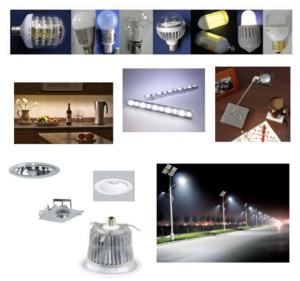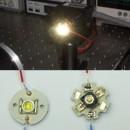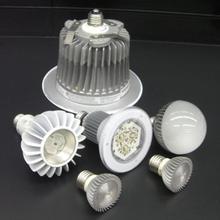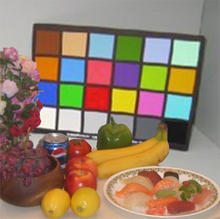Summary
With the rise of new, energy-efficient solid-state lighting (SSL) systems has come the need for new performance metrics and measurement methods to address their unique construction and operating conditions. NIST is working closely with the U.S. Department of Energy (DOE) and national/international standardizing bodies to develop new standards for SSL, with research on color quality and measurement methods for high-power light emitting diodes (LEDs) and other SSL products. In addition, we are also developing new calibration standards and services to support the industry's measurement needs.
Description

Light Emitting Diodes (LEDs) are increasingly being introduced into lighting market, and solid state lighting (SSL) is becoming a reality. But, this new technology still faces many challenges. Lighting consumes a huge amount of energy, currently 22% of all electricity consumed in the U.S. White LED sources are expected to be twice, or more, energy-efficient than fluorescent lamps. Thus, SSL is expected to have a big impact on nation's energy saving.
The Department of Energy (DOE) is promoting SSL with a goal of reducing the total energy spent by lighting to half by 2027, which will achieve a huge energy savings for the nation. We are working closely with DOE, especially in support of their Energy Star program, by developing national and international standards for LED/SSL, measurement services for LEDs, a laboratory accreditation program, and furthering research on all photometric aspects of solid-state lighting sources.
Major Accomplishments
NIST recently made major contributions to CIE 127:2007 Measurement of LEDs (2nd ed.), ANSI C78.377A Chromaticity Specification for SSL products, and IESNA LM-79-08 Approved Methods for Electrical and Photometric Measurements of SSL products.
For more details about these contributions, see Standardization support.

We recently developed a practical method for measurement of high power LEDs (based on junction temperature), which has become basis for new standards on test methods for high power LEDs, being developed in IESNA and CIE (TC 2-63).
For more information about this method, see Measurement of high-power LEDs.

In support of DOE Energy Star for SSL products, we led the development of IES LM-79-8 Approved Method for Electrical and Photometric Measurement of SSL Products, which has become a key standard for the DOE Energy Star program and the SSL industry. In cooperation with NIST NVLAP, we have also developed a laboratory accreditation program for SSL products, which is required by Energy Star.
For more details about these activities, see Measurement of solid-state lighting products.
Color quality issues

We are also working on improvements in metrology for the color quality of SSL sources. Some narrowband features of LED spectra can improve or degrade color appearance of objects significantly, which are not addressed in the current standard (CIE Color Rendering Index). NIST recently launched a Vision Science Program to address these issues with new lighting technologies, develop new international standards, and improve other photometric and colorimetric standards based on vision science. As part of this program, we developed the Spectrally Tunable Lighting Facility to study these and other color quality issues of SSL sources. For more information, see Vision science.
Calibrations for LEDs
We have developed the capabilities for calibrating various quantities for LEDs and SSL products. We currently provide calibration services for total luminous flux (lumen), radiant flux (watt), luminous efficacy (lm/W), luminous intensity (cd), chromaticity coordinates (directional, 4π integrated), correlated color temperature (CCT), color rendering index (CRI), dominant wavelength, and more. We calibrate LED packages and arrays, integrated LED lamps and small LED luminaries. For more information about these services, see NIST Calibration Services' Photometric measurements.

